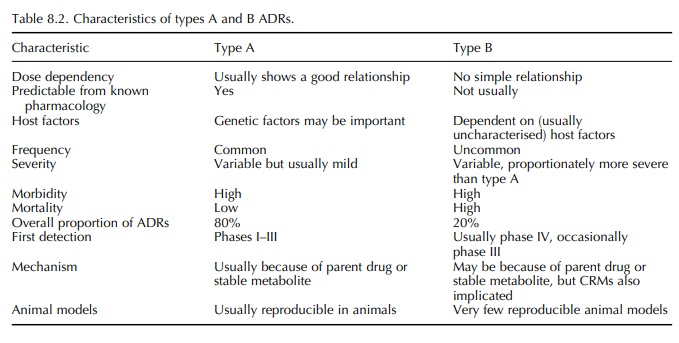Classification of Adverse Drug Reactions
| Home | | Pharmacovigilance |Chapter: Pharmacovigilance: Mechanisms of Adverse Drug Reactions
There are many different classifications of ADRs.
CLASSIFICATION OF ADVERSE DRUG
REACTIONS
There
are many different classifications of ADRs. For the purpose of this chapter, we
will use the origi-nal classification proposed by Rawlins and Thompson (1991),
which divided adverse drug reactions into two types, type A (pharmacological)
and type B (idiosyn-cratic) (Table 8.2). The type A reactions represent an
augmentation of the known pharmacological actions of a drug, are dose-dependent
and, perhaps more importantly from the viewpoint of safety, are readily
reversible on drug withdrawal or even simply after dose reduction (Table 8.2).
By contrast, the type B, or idiosyncratic adverse reactions, are bizarre,
cannot be predicted from the known pharmacological actions of the drug, do not
show simple dose dependency and cannot be reproduced in animal models. The type
A reactions are more common than the type B reactions (Einarson, 1993),
accounting for over 80% of all reac-tions. Although they cause a great deal of
morbidity, in general, type A reactions are proportionately less severe and
less likely to result in fatalities than type B reactions.

Related Topics
